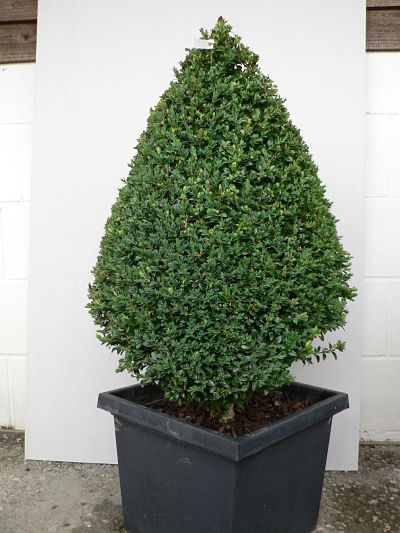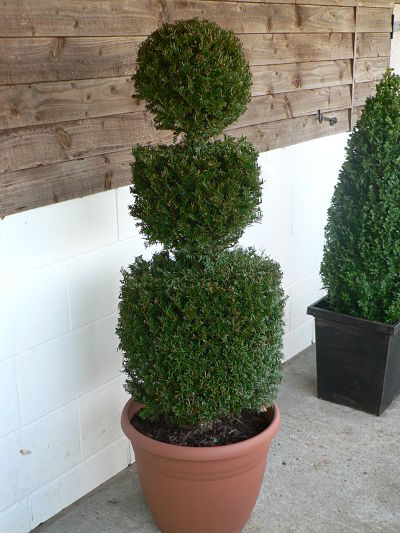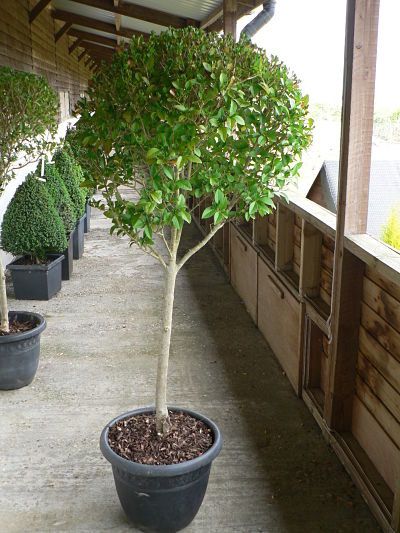box - buxus
sempervirens

Box is proof that you get what you pay for. Topiary retains it's dense look year round and only requires one trim annually. Traditionally this is carried out on Derby Day (approx. the second weekend in June). This is a good rule of thumb but don't worry if you miss it, we are looking to trim when the risk of frost is at it's minimum and giving the cut time to heal before the onset of autumn. So if you are a bit early or late , fret not.
When watering box, at least once a week in summer if kept in a pot, put the hose or watering can below the foliage so that the roots get all the moisture.
The main problems with box usually display as a browning of the the leaves. Many will scream "Box Blight", it rarely is, especially if you are growing in a pot.. The normal causes of leaf browning in order of likleyhood are:
drought, drowning, disease (aphid) and finally blight!
yew - taxus
baccata

Yew is the classical topiary plant. Ideal for large statement pieces and formal hedges. The dark green foliage is perfect to offset ornamental grasses and flowering borders. It has the reputation of being slow growing, however when happy, yew can grow at a good pace. Trimming can be required once or twice a year depending on need. It is does not matter greatly when in the year it is done. If you can avoid the hottest days it will avoid scorching the cuts ends.
Tip: keep your cutting blades wet to make them more efficient and not transfer disease from plant to plant. A bucket of water by your side is the easiest way.
Keep well watered through the summer.
Problems are rare but recently arrived aphids have shown the
ability to bring down a mature yew plant. Use a standard
insecticide in the short term. Long term, encourage ladybirds and
lacewings to make your garden their home. You can't have too
many.
oval leaf privet
- ligustrum ovalifolium

Oval leaf privet is not normally considered a topiary plant. However, used instead of bay as a half standard it makes a good low cost way providing height and form. It also has the advantage of being fully hardy and in early summer it produces a display of stunning white flowers. It is almost fully evergreen. If kept out of the wind it will hold it's leaf until the new one pushes the old off in early spring.
The growth is quite fast and it will require two to three trims per season, between May and September. Growth occurs at the top and shoots are thrown up from the base, just keep nipping them out. Keep your eye out for leaf curl, caused by insects laying eggs on the leaves and then folding them over to make a cocoon.
Water well in summer. Privet will tell you when it requires water by letting it's leaves go limp and losing colour.
Tip: Feed well during the grwoing season using
a high nitrogen fertilzer. Fish,blood & bone will do.